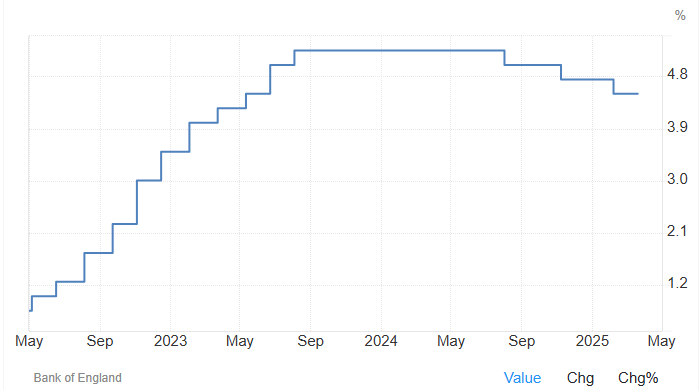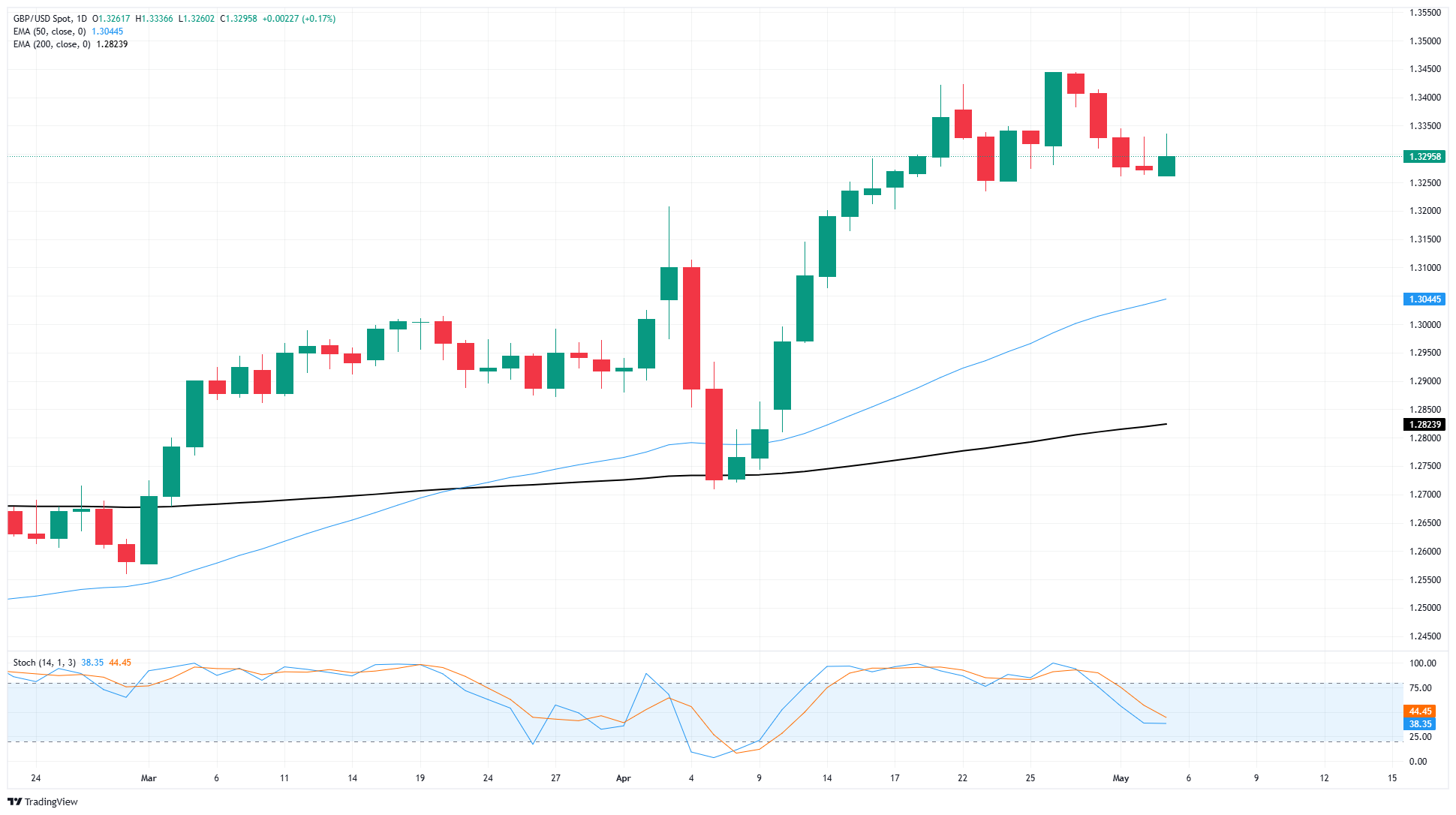GBP/USD settles ahead of central bank double header
- GBP/USD is stuck near 1.3300 ahead of Fed, BoE showings.
- Fed is set to keep rates on hold again as Fed policymaker rhetoric takes center stage.
- BoE broadly expected to deliver another quarter-point cut this week.
GBP/USD snapped a near-term losing streak, pumping the breaks and holding steady near the 1.3300 handle to kick off a fresh trading week. Cable remains down from recent multi-year highs, but price action has pushed into a holding pattern ahead of key showings from both the Federal Reserve (Fed) and the Bank of England (BoE).
The Fed is broadly expected to keep interest rates on hold for the time being, a move that is likely to draw more fire from the Trump administration which remains staunchly determined to try and squeeze early rate cuts out of Fed Chair Jerome Powell. Labor and inflation figures remain largely on-balance, with roughshod and opaque trade policies out of the White House shooting its own hopes for rate cuts in the foot as the Fed remains committed to its mandate of keeping unemployment and price volatility in check.
Despite the Fed’s all but assured rate hold on the cards this week, Fed head Powell’s words will take on additional weight for investors following the Fed’s rate call on Wednesday. Markets are still hoping for a pivot into a fresh rate cutting cycle, and traders will be sniffing out any signs of dovishness from Fed policymakers.
On the UK side, the BoE is broadly expected to deliver another quarter-point rate cut on Thursday. The BoE’s Monetary Policy Committee (MPC) is expected to vote 9-to-1 in favor of a 25 bps rate trim.

GBP/USD price forecast
GBP/USD traders found the bid button on Monday, halting a four-day losing streak that dragged Cable down 1.37%. Despite pumping the breaks on a near-term decline, bullish potential remains limited, with technical oscillators mired in a sluggish midrange. The pair appears poised for a slow walkback after a sharp bounce from the 200-day Exponential Moving Average (EMA) near 1.2750 back in early April.
GBP/USD daily chart

Pound Sterling FAQs
The Pound Sterling (GBP) is the oldest currency in the world (886 AD) and the official currency of the United Kingdom. It is the fourth most traded unit for foreign exchange (FX) in the world, accounting for 12% of all transactions, averaging $630 billion a day, according to 2022 data. Its key trading pairs are GBP/USD, also known as ‘Cable’, which accounts for 11% of FX, GBP/JPY, or the ‘Dragon’ as it is known by traders (3%), and EUR/GBP (2%). The Pound Sterling is issued by the Bank of England (BoE).
The single most important factor influencing the value of the Pound Sterling is monetary policy decided by the Bank of England. The BoE bases its decisions on whether it has achieved its primary goal of “price stability” – a steady inflation rate of around 2%. Its primary tool for achieving this is the adjustment of interest rates. When inflation is too high, the BoE will try to rein it in by raising interest rates, making it more expensive for people and businesses to access credit. This is generally positive for GBP, as higher interest rates make the UK a more attractive place for global investors to park their money. When inflation falls too low it is a sign economic growth is slowing. In this scenario, the BoE will consider lowering interest rates to cheapen credit so businesses will borrow more to invest in growth-generating projects.
Data releases gauge the health of the economy and can impact the value of the Pound Sterling. Indicators such as GDP, Manufacturing and Services PMIs, and employment can all influence the direction of the GBP. A strong economy is good for Sterling. Not only does it attract more foreign investment but it may encourage the BoE to put up interest rates, which will directly strengthen GBP. Otherwise, if economic data is weak, the Pound Sterling is likely to fall.
Another significant data release for the Pound Sterling is the Trade Balance. This indicator measures the difference between what a country earns from its exports and what it spends on imports over a given period. If a country produces highly sought-after exports, its currency will benefit purely from the extra demand created from foreign buyers seeking to purchase these goods. Therefore, a positive net Trade Balance strengthens a currency and vice versa for a negative balance.

